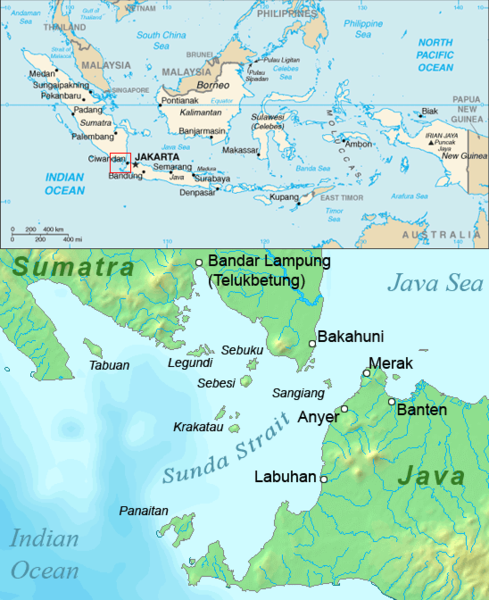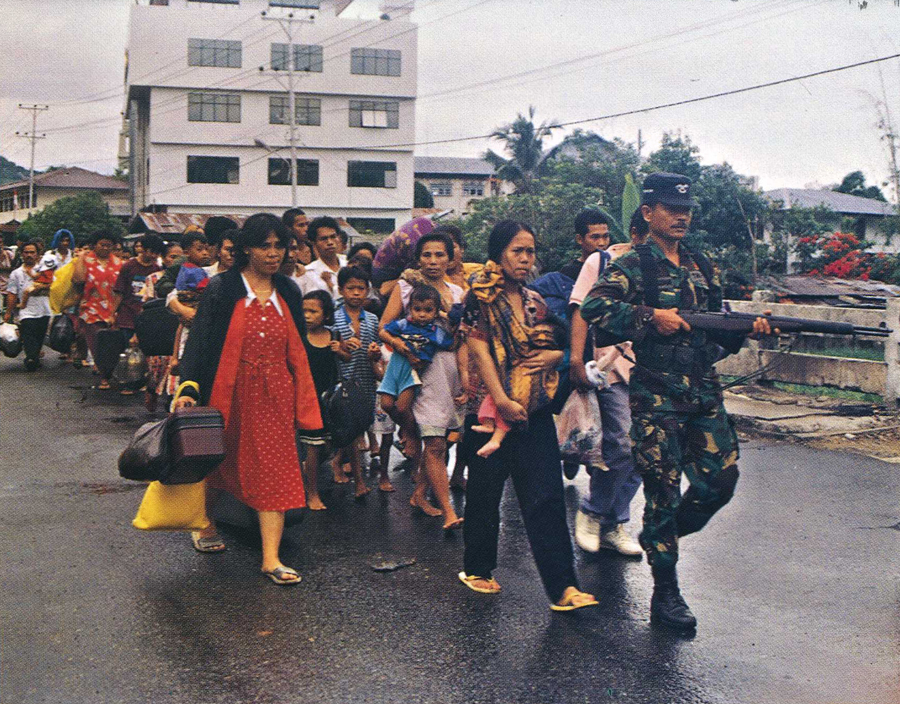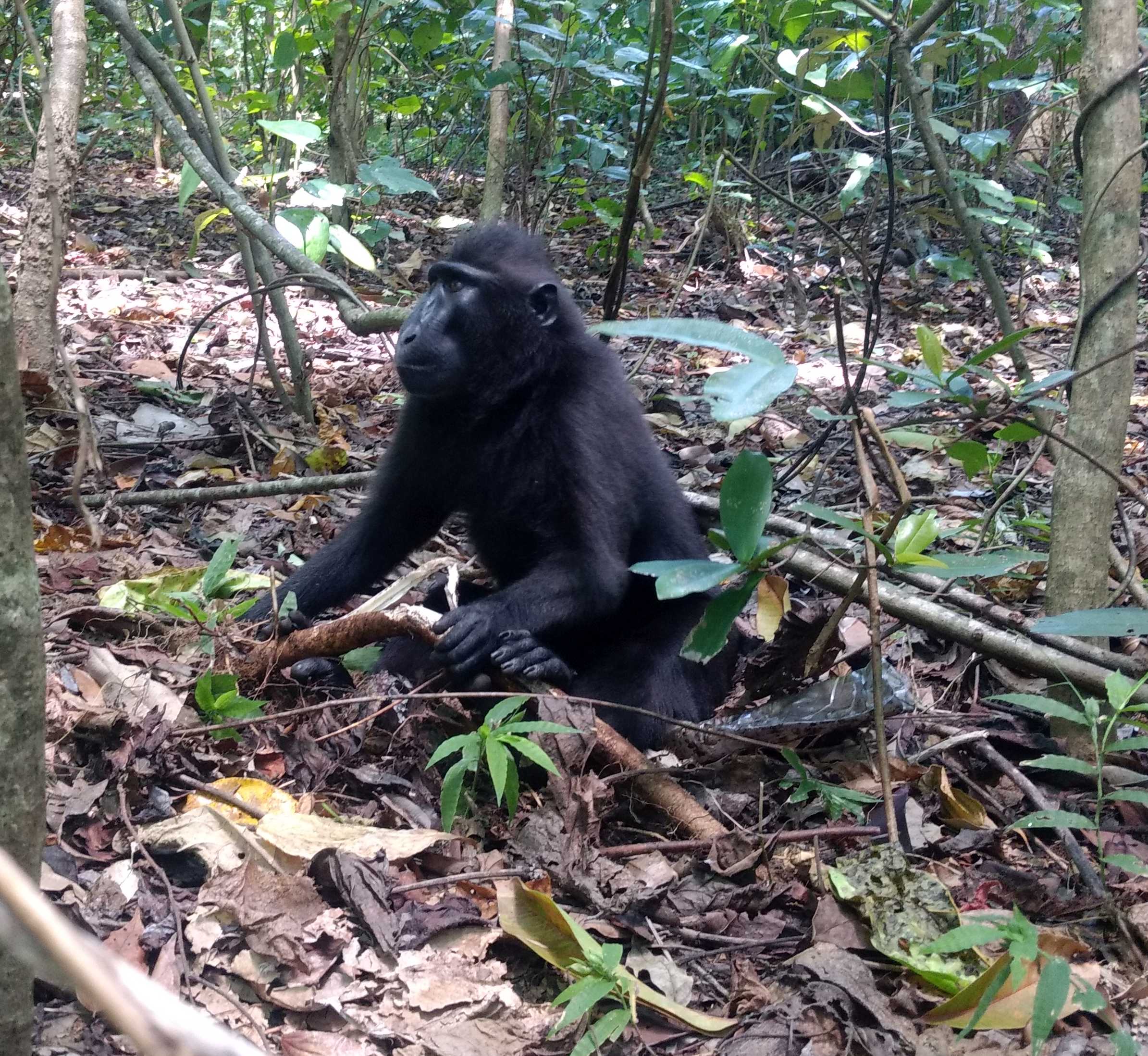|
Natural Disasters In Indonesia
Natural disasters in Indonesia can usefully be divided into major disasters, medium level disasters, and lesser disasters which although causing less damage are very common across Indonesia. These can conveniently be considered as macro, mezzo, and micro events. Policies to respond to natural disasters in Indonesia, which are still in an early stage of being developed, need to develop strategies to deal with each of these different types of disasters. The official website of thIndonesian National Disaster Mitigation Agency(''Badan Nasional Penanggulangan Bencana'') provides frequent updates on disasters occurring in Indonesia. Major natural disasters with widespread loss of life The following is a list of main natural disasters that have occurred in Indonesia during recent history which have led to major loss of life (broadly defined here as over 500 deaths in the disaster). (1) Total death toll unknown. The eruption is believed to have had a worldwide impact. (2) This is the ... [...More Info...] [...Related Items...] OR: [Wikipedia] [Google] [Baidu] |
Krakatoa Eruption Lithograph
Krakatoa (), also transcribed (), is a caldera in the Sunda Strait between the islands of Java and Sumatra in the Indonesian province of Lampung. The caldera is part of a volcanic island group (Krakatoa archipelago) comprising four islands. Two, Lang Island, Lang and Verlaten Island, Verlaten, are remnants of a previous volcanic edifice destroyed in eruptions long before the famous 1883 eruption of Krakatoa, 1883 eruption; another, Rakata, is the remnant of a much larger island destroyed in the 1883 eruption. In 1927, a fourth island, Anak Krakatoa, or "Child of Krakatoa", emerged from the caldera formed in 1883. There has been new eruptive activity since the late 20th century, with a large collapse causing 2018 Sunda Strait tsunami, a deadly tsunami in December 2018. Historical significance The most notable eruptions of Krakatoa culminated in a series of massive explosions over 26–27 August 1883, which were among the most violent volcanic events in recorded history. Wi ... [...More Info...] [...Related Items...] OR: [Wikipedia] [Google] [Baidu] |
Bengkulu
Bengkulu is a province of Indonesia. It is located on the southwest coast of Sumatra. It was formed on 18 November 1968 by separating out the former Bencoolen Residency area from the province of South Sumatra under Law No. 9 of 1967 and was finalized by Government Regulation No. 20 of 1968. Spread over 19,813 km2, it is bordered by the provinces of West Sumatra to the north, Jambi to the northeast, Lampung to the southeast, and South Sumatra to the east, and by the Indian Ocean to the northwest, south, southwest, and west. Bengkulu is the 25th largest province by area; it is divided into nine regencies and the city of Bengkulu, the capital and the only independent city. Bengkulu is also the 26th largest province by population in Indonesia, with 1,715,518 inhabitants at the 2010 Census and 2,010,670 at the 2020 Census;Badan Pusat Statistik, Jakarta, 2021. the official estimate as at mid 2021 was 2,032,941.Badan Pusat Statistik, Jakarta, 2022. According to a release by Bada ... [...More Info...] [...Related Items...] OR: [Wikipedia] [Google] [Baidu] |
West Papua (region)
Western New Guinea, also known as Papua, Indonesian New Guinea, or Indonesian Papua, is the western half of the Melanesian island of New Guinea which is administered by Indonesia. Since the island is alternatively named as Papua, the region is also called West Papua ( id, Papua Barat). Lying to the west of Papua New Guinea and considered a part of the Australian continent, the territory is almost entirely in the Southern Hemisphere and includes the Schouten and Raja Ampat archipelagoes. The region is predominantly covered with ancient rainforest where numerous traditional tribes live such as the Dani of the Baliem Valley although a large proportion of the population live in or near coastal areas with the largest city being Jayapura. Within five years following its proclamation of independence in 1945, the Republic of Indonesia (for a time part of the United States of Indonesia) took over all the former territories of the Dutch East Indies except Western New Guinea, accord ... [...More Info...] [...Related Items...] OR: [Wikipedia] [Google] [Baidu] |
1917 Bali Earthquake
The 1917 Bali earthquake occurred at 06:50 local time on 21 January (23:11 on 20 January UTC). It had an estimated magnitude of 6.6 on the surface wave magnitude scale and had a maximum perceived intensity of IX (''Violent'') on the Mercalli intensity scale. It caused widespread damage across Bali, particularly in the south of the island. It triggered many landslides, which caused 80% of the 1,500 casualties. Tectonic setting The island of Bali forms part of the Sunda Arc, which formed above the convergent boundary where the Australian Plate is subducting beneath the Sunda Plate. The rate of convergence across the line of the Sunda–Java Trench is 7.5 cm per year. Eastwards from Bali, the Sunda Arc is also being thrust over the Bali and Flores back-arc basins on a series of south-dipping thrusts. Focal mechanisms for earthquakes near Bali are dominantly thrust sense on both the subduction interface and the system of thrust faults to the north. Earthquake The ear ... [...More Info...] [...Related Items...] OR: [Wikipedia] [Google] [Baidu] |
Maluku (province)
Maluku is a province of Indonesia. It comprises the central and southern regions of the Maluku Islands. The main city and capital of Maluku province is Ambon on the small Ambon Island. The land area is 62,946 km2, and the total population of this province at the 2010 census was 1,533,506 people, rising to 1,848,923 at the 2020 Census. The official estimate as at mid 2021 was 1,862,626. Maluku is located in Eastern Indonesia. It is directly adjacent to North Maluku and West Papua in the north, Central Sulawesi, and Southeast Sulawesi in the west, Banda Sea, East Timor and East Nusa Tenggara in the south and Arafura Sea and Papua in the east. Maluku has two main religions, namely Islam which at the 2020 Census was adhered to by 52.85% of the population of the province and Christianity which is embraced by 46.3% (39.4% Protestantism and 7.0% Catholicism). Maluku is recorded in the history of the world due to conflict or tragedy of humanitarian crisis and sectarian conflict ... [...More Info...] [...Related Items...] OR: [Wikipedia] [Google] [Baidu] |
Seram Island
Seram (formerly spelled Ceram; also Seran or Serang) is the largest and main island of Maluku province of Indonesia, despite Ambon Island's historical importance. It is located just north of the smaller Ambon Island and a few other adjacent islands, such as Saparua, Haruku, Nusa Laut and the Banda Islands. Geography and geology Seram is traversed by a central mountain range, the highest point of which, Mount Binaiya, is covered with dense rain forests. Its remarkably complex geology is because of its location at the meeting of several tectonic microplates, which have been described as "one of the most tectonically complex areas on Earth". Seram actually falls on its own microplate, which has been twisted around by 80° in the last 8 million years by the relatively faster movement of the Papua microplate. Meanwhile, along with the northward push of the Australian Plate, this has resulted in the uplift that gives north-central Seram peaks of over 3000 m. On the island, there a ... [...More Info...] [...Related Items...] OR: [Wikipedia] [Google] [Baidu] |
1899 Ceram Earthquake
On 30 September 1899 the island of Ceram, Dutch East Indies, was struck by an Ms 7.8 earthquake which was accompanied by a 10-meter landslide-induced tsunami. According to the Batavian Magnetic and Meteorological Observatory, the shock occurred at 01:42.2 AM Amahei local time.Dr. R. D. M. Verbeek, ''Kort verslag over de aard- en zeebeving op Ceram, den 30sten september 1899'' (Batavia Landsdrukkerij, 1900) p. 1–11. The study about the quake and its effects was published by Dr. R. D. M. Verbeek in an article named ''Short Report about the earth- and sea-quake in Ceram, the 30th September 1899'', which serves as the only extensive source on this earthquake. Earthquake and tsunamis The Ceram earthquake is ranked among the tectonic quakes. The epicenter of the quake is shown in Figure 1. From there the quake spread in all directions. The most forceful spread went west and east, presumably through an old crack or tear in the Earth's crust. The 1899 Ceram earthquake had nothing ... [...More Info...] [...Related Items...] OR: [Wikipedia] [Google] [Baidu] |
North Sulawesi
North Sulawesi ( id, Sulawesi Utara) is a province of Indonesia. It is located on the Minahasa Peninsula of Sulawesi, south of the Philippines and southeast of Sabah, Malaysia. It borders the Philippine province of Davao Occidental and Soccsksargen regions of the Philippines to the north, the Maluku Sea to the east, Gorontalo and Celebes Sea to the west and the Gulf of Tomini to the southwest. With Miangas, it is the northernmost province of Indonesia. The province's area is , and its population was 2,270,596 according to the 2010 census; this rose to 2,621,923 at the 2020 Census, while the official estimate as at mid 2021 was 2,638,631. The province's capital and largest city is Manado, which is also the main gateway and the economic center of the province. Other major towns includes Tomohon and Bitung in the northern (Minahasa) half of the province, and Kotamobagu in the southern (Bolaang Mongondow) half. There are 41 mountains with an altitude ranging from . Most geologic ... [...More Info...] [...Related Items...] OR: [Wikipedia] [Google] [Baidu] |
Mount Awu
Mount Awu ( id, Gunung Awu) is the largest volcano in the Sangihe chain, located on Sangir Island in North Sulawesi, Indonesia. Powerful eruptions occurred in 1711, 1812, 1856, 1892 and 1966 with devastating pyroclastic flows and lahars that have resulted in more than 8,000 fatalities altogether. A 4.5 km wide crater is found at the summit and a deep valley forms a passageway for lahars, splitting the flanks from the crater. This is a volcano in the Ring of Fire. See also * List of volcanoes in Indonesia The geography of Indonesia is dominated by volcanoes that are formed due to subduction zones between the Eurasian plate and the Indo-Australian plate. Some of the volcanoes are notable for their eruptions, for instance, Krakatoa for its globa ... References Stratovolcanoes of Indonesia Active volcanoes of Indonesia Mountains of North Sulawesi VEI-4 volcanoes Landforms of the Celebes Sea Landforms of North Sulawesi 20th-century volcanic events 19th-c ... [...More Info...] [...Related Items...] OR: [Wikipedia] [Google] [Baidu] |
Lampung
Lampung (Lampung: ), officially the Province of Lampung ( id, Provinsi Lampung) is a province of Indonesia. It is located on the southern tip of the island of Sumatra. It has a short border with the province of Bengkulu to the northwest, and a longer border with the province of South Sumatra to the north. It is the original home of the Lampung people, who speak their own language, and possess their own written script. Its capital is Bandar Lampung. The province covers a land area of 35,376 sq.km and had a population of 7,608,405 at the 2010 census, 9,007,848 at the 2020 census, and 9,081,792 according to the official estimates for mid 2021,with three-quarters of that being descendants of Javanese, Madurese, and Balinese migrants. These migrants came from more densely populated islands, in search of available land, as well as being part of the national government's Indonesian transmigration program, of which Lampung was one of the earliest and most significant transmigrati ... [...More Info...] [...Related Items...] OR: [Wikipedia] [Google] [Baidu] |
Sunda Strait
The Sunda Strait ( id, Selat Sunda) is the strait between the Indonesian islands of Java island, Java and Sumatra. It connects the Java Sea with the Indian Ocean. Etymology The strait takes its name from the Sunda Kingdom, which ruled the western portion of Java (an area covering the present day West Java, Jakarta, Banten, and some of western Central Java) from 669 to around 1579."Sunda Islands". Concise Dictionary of World Place-Names. John Everett-Heath. Oxford University Press 2005. Oxford Reference Online. Oxford University Press. The name also alludes to the Sundanese people native to West Java and Banten, as distinct from the Javanese people, who live mostly in Central and East Java. Geography Extending in a roughly southwest/northeast orientation, with a minimum width of at its northeastern end between Cape Tua on Sumatra and Cape Pujat on Java, the strait is part of the Java Sea. It is essentially triangular in shape, with two large bays on its northern side. It is al ... [...More Info...] [...Related Items...] OR: [Wikipedia] [Google] [Baidu] |
1883 Eruption Of Krakatoa
The 1883 eruption of Krakatoa ( id, Letusan Krakatau 1883) in the Sunda Strait occurred from 20 May until 21 October 1883, peaking in the late morning hours of 27 August when over 70% of the island of Krakatoa and its surrounding archipelago were destroyed as it collapsed into a caldera. The eruption was one of the deadliest and most destructive volcanic events in recorded history. The explosion was heard away in Perth, Western Australia, and Rodrigues near Mauritius, away. The sound wave is recorded to have travelled around the globe seven times. At least 36,417 deaths are attributed to the eruption and the tsunamis it created. Significant additional effects were also felt around the world in the days and weeks after the volcano's eruption. Additional seismic activity was reported until February 1884, but any reports after October 1883 were dismissed by Rogier Verbeek's subsequent investigation into the eruption. Early phase In the years before the 1883 eruption, seismic ... [...More Info...] [...Related Items...] OR: [Wikipedia] [Google] [Baidu] |










